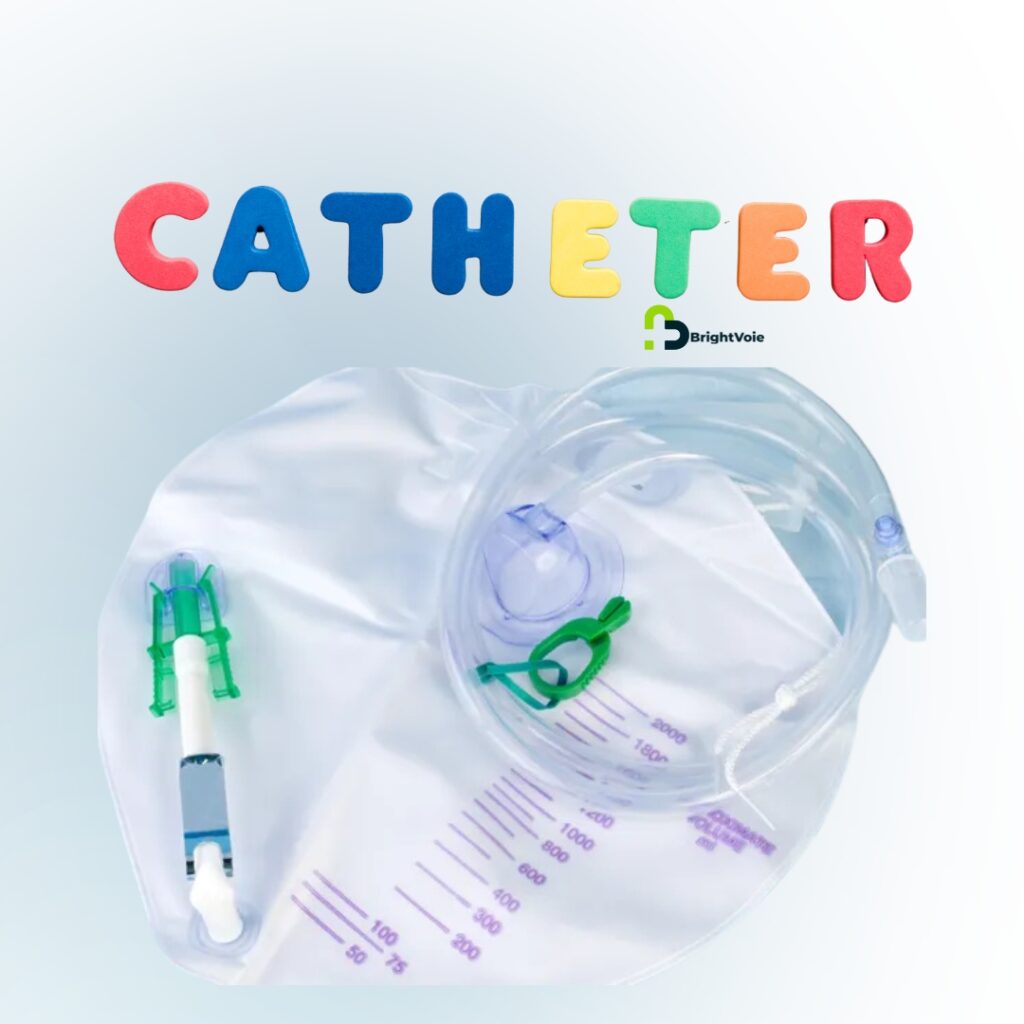
For many people, a catheter is essential for managing health conditions, recovering from surgery, or supporting mobility needs. However, proper care is key to preventing infections, discomfort, and complications.
Catheter insertion at home should always be done by a trained professional in a safe, hygienic setting to ensure comfort, dignity, and well-being.
Understanding Indwelling Catheters
An indwelling catheter (also called a Foley catheter) is a flexible tube placed in the bladder to drain urine. It stays in place with a small, water-filled balloon inside the bladder. The urine flows through tubing into a drainage bag.
There are two types of drainage bags:
- Day bag (leg bag): A smaller bag that straps around the thigh, worn under clothing during the day.
- Night bag: A larger bag attached to a bed or wheelchair for overnight use.
If you use a leg bag during the day, it will need to be switched to a night bag before bedtime to ensure continuous drainage.
Male vs. Female Catheters: What’s the Difference?
While both male and female catheters serve the same purpose, there are key differences:
- Male catheters are longer to accommodate anatomy and may be secured to the upper thigh or lower abdomen for comfort and stability.
- Female catheters are shorter and are typically secured to the upper thigh.
Our in-home nurses ensure the right fit and positioning for comfort and ease of movement, minimizing the risk of pulling or discomfort.
How to Care for a Catheter at Home
Proper catheter care reduces the risk of infection and keeps everything functioning smoothly. If you or a loved one has a catheter, here are essential steps for daily care:
Preventing Infection
- Always wash your hands with soap and water (or an alcohol-based sanitizer) before and after handling the catheter.
- Keep the catheter secured to prevent pulling or discomfort.
- Make sure the drainage bag stays below bladder level to allow urine to flow properly.
- Never place the drainage bag on the floor.
Cleaning the Catheter
- Gently wash the catheter where it enters the body and the surrounding area with soap and water every day, preferably in the shower.
- Avoid powders or lotions near the catheter site.
- Check for any kinks or blockages in the tubing and straighten them if needed.
Emptying and Changing the Drainage Bag
To avoid complications, the drainage bag should be emptied when it’s half to two-thirds full, at least every 4 to 8 hours.
How to Empty the Drainage Bag
- Wash your hands thoroughly.
- Open the drainage spout over a toilet or measuring cup (if tracking urine output).
- Avoid touching the spout or letting it touch the toilet or measuring container.
- Clean the spout with an alcohol swab before closing it.
When to Change the Drainage Bag
- When switching from a leg bag to a night bag.
- If the bag has an odor, discoloration, or leakage.
- Every 7 days if using both a day and night bag.
If you have home nursing care, your nurse will monitor the catheter and drainage bag, making necessary changes to ensure safety and hygiene.
Signs of a Problem: When to Call for Help
A catheter should never cause pain or ongoing discomfort. If you notice any of the following, contact your nurse or healthcare provider:
- Leakage around the catheter
- Fever, chills, or body aches
- Redness, swelling, or bleeding near the catheter site
- Cloudy, dark, or foul-smelling urine
- Little to no urine drainage despite drinking enough fluids
A trained nurse is skilled in identifying early signs of complications and can arrange immediate medical attention if needed.
Why Professional In-Home Catheter Care Matters
Managing a catheter at home can be overwhelming, but you don’t have to do it alone. BrightVoie’s skilled nurses and caregivers provide compassionate, expert catheter care, so you or your loved one can feel comfortable and supported every step of the way.
Whether it’s routine cleaning, monitoring for infections, or ensuring a smooth transition between day and night bags, our team is here to help.

